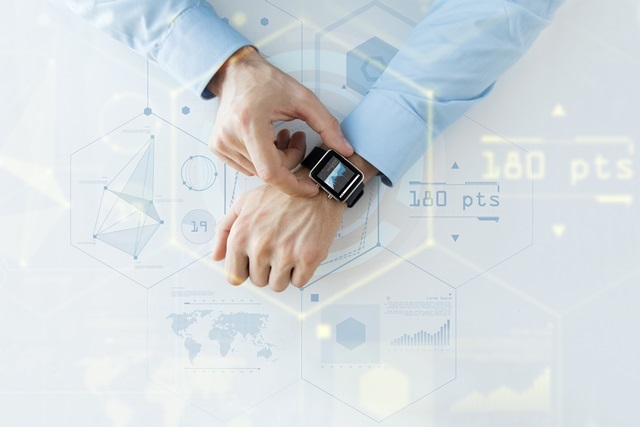
It is likely that you or someone you know received wearable technology this holiday season. Activity monitors have become much more than the pedometers they were a few short years ago. Today's state-of–the-art wearables measure how many steps you take, estimate the distance you covered, track your activity intensity, tell you how many floors you climbed, measure your heartbeat and monitor your sleep. When paired with a smartphone, they can help you set and achieve activity goals, give you insights and tips on improving your health and help you train for races and sports activities. Some wearables even have displays and vibration motors that can alert users when they need to get up and move, provide feedback on their activity or have received an important email or text.
The form factors for activity monitors vary, but most are small and are worn on the wrist. Creating a tiny wearable device has many challenges, most of which center around the efficient use of space and power. Since they are meant to be used while doing activities, they are slim, light-weight and waterproof. The device must be on all the time, constantly taking data and be ready to provide feedback to the user. To do this, efficient power management is a must, and choosing components with efficient power use and low quiescent currents is critical. Also, customers want to wear the activity monitor constantly, so the time between recharges must be long, and the time to recharge the battery must be short. Packing so much into such a small product is a challenge, but TI has several battery solutions that could help.
Because most wearables have small capacity batteries to keep the total size small, they require specialized chargers like the bq25100 to maximize performance and achieve small solution size, low maximum charging current, accurate termination, and low leakage.
The small capacity batteries impact every other device in the system. The power management must be highly efficient at high loads as well as light loads. To achieve this, low quiescent current DC/DC converters with new control technologies are needed such as DCS-Control found in the TPS62740. These DC/DC converters maximize the time that the battery can provide power to the system.
Wearables have a variety of inputs that provide the information needed to calculate the user's activity such as accelerometers, gyroscopes, temperature, humidity, light, and pressure sensors. These data are processed by a microcontroller, such as an ultra-low-power MSP430™ MCU, and sent to a smartphone or computer using Bluetooth® low energy. TI's SensorTag development kit allows developers to prototype systems quickly using these technologies.
For wearables with displays, a boost converter is usually required for driving LEDs or illuminating the display. TI has a variety of boosts that are small and efficient for this application such as the TPS61060. The boost can also be used to power the optical heart rate monitor’s LED.
Many wearables have simple user controls that require a pushbutton controller and reset timer. TI has small, power efficient solutions for these needs as well in the TPS3421 family of parts.
As you can see, TI has small, power efficient components to create unique wearable devices. Here’s to living healthier with TI technology!
Additional resources:
- Batteries not included (and not needed): Tiny ICs enable battery-free IoT
- "Adapting Qi-compliant wireless power solutions to low-power wearable products"
- Tiny Wireless Receiver for Low Power Wearable Applications Reference Design
- Giving the gift of wearables this holiday? Don’t forget to look at the battery charger!
- 3 Keys to Ultra-Low-Power in Wearable Designs

-

jivan patil
-
Cancel
-
Up
0
Down
-
-
Reply
-
More
-
Cancel
Comment-

jivan patil
-
Cancel
-
Up
0
Down
-
-
Reply
-
More
-
Cancel
Children